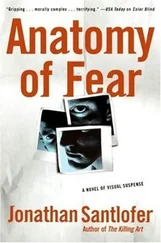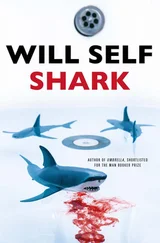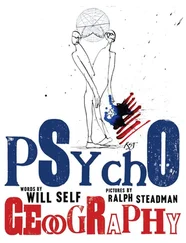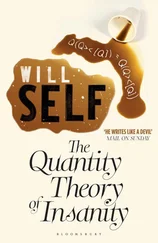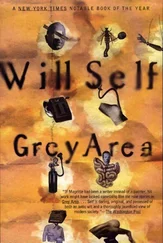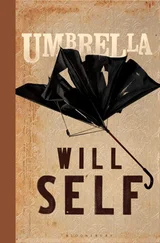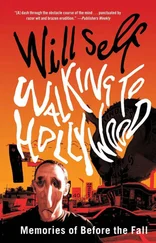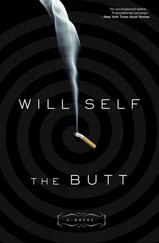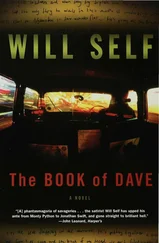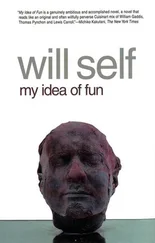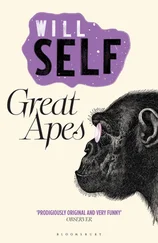In many of the paintings, pricks (‘penises’ would be to dignify them) stuck out of the pictorial space as scaffolding poles do off the back of a flat-bed truck. Trouget employed them to support the drapery of his backgrounds, which were divided, laterally, into three, or stretched into astigmatism, or simply dumped in the corner, a heap of old Euclid.
Art critics — who never know better — ascribed both the persistences and the discontinuities in the Tosher’s works to ideological conflicts, and to modes of being and seeing that were at once lofty, yet, for him, gnawingly ordinary. The reality — as any of his fellow club members could have told them — was that he was always pissed.
But the most salient thing about Trouget’s paintings — a fact long since ignored, now that you can see a Trouget replicated in an advert for arch supports, or a poster of one stuck up in the toilet of a small town library — is that, without exception, whether seated, standing, recumbent — or, in the case especially of the dogs, on their haunches — all of the figures were upended: dangling men and women, their painterly hair draggling the heavy gilded frames Trouget’s gallerist favoured.
Whether this made of his subjects brachiating apes or lynch victims, it was difficult to say — and the critics expended a great deal of energy not saying either; but on that balmy evening in mid June, in the mid 1980s, there were few among the attendees of the private opening who did not experience these serried ranks of gibbeted figures as anything except premonitory of Death.
Their shoulders hunched in their outsized shoulder pads; their scalps contracted beneath their big hair. Whether they were drawn into the horror show of an individual painting, or hurried past them all in a blur, even the most corpulent bankers visibly shrank into the boxy confines of their double-breasted suits, while their Adam’s apples shrivelled behind the huge knots of their Valentino ties.
The artist himself blew and spun through the Hayward, a masochistic spindrift of a man, who was wafted along by the artistic director, the curator and even — for a good part of the evening — the Minister for the Arts himself. (A ludicrous goofy fatty, who later that year was to lose his portfolio, after getting his prick stuck — like a scaffolding pole — in a prostitute.)
When Trouget finally found Val and the others, they had gone to ground in one of the smallest spaces — no greater than a well-lit coal hole — where he had placed three of his ‘sculptures’. Which were nothing more — and possibly even less — than the rags Trouget used to clean his brushes. Glaucous, pyramidical piles of these — the arse-wipes of his art — now lay under perspex. This, an astute memorializing of his thrilling praxis, anticipated the wholesale iconography that was to be constructed after his death, when the ’dilly boy Trouget had named as his heir flogged off the Maître’s studio. It was systematically broken up, the 597,644 bits individually numbered, then crated and shipped to Indonesia, where they were reassembled in a Jakarta shopping mall, much to everyone’s satisfaction.
The supplies of ’poo were perfectly acceptable for anyone who called it champagne — but not for the Plantation workers. Seeing that they were getting restive, and perhaps fearing a scene, the Martian had discreetly palmed a waiter a twenty pound note; subsequently, tray after tray came winging down into the coal hole.
Val sat on a padded bench bracketed by the Typist and Her Ladyship, while His Nibs, the Poof, the Extra, the Dog, the Cunt, the Martian and the Boy leant against the outside-inside walls. Seeing them all clearly — which, after all, was what he was good at — abstracted from their usual habitat, even the other-worldly painter was taken by how anachronistic they all seemed. In this brave new world of matt black and mirrored glass the Dog’s terrycloth shirt and flared trousers, the Extra’s leather waistcoat and floor-licking knitted scarf, the Cunt’s Harrington jacket and polyester trousers, even His Nibs’ suit — brown, Burton, gleaming at shoulder and elbow with wear — let alone Val and the Boy’s matching Breton fishermen’s jerseys — all set them as firmly apart as the Appalachians do remote hillbilly communities. Their arch cuntishness and mannered Cockney was as bizarre to the ears of the passing crowd as Elizabethan dialect in the mouths of modern Americans.
Trouget saw this — and grasped it entire. Life, properly conceived of, was not his subject, which was why he preferred to work not with life models but with pages torn from magazines, old anatomical drawings, postcards and osteopathy instruction manuals. So, now that the members of the Plantation Club had been torn out of their own era and pasted on to another, he could apprehend them for what they truly were.
‘Blimey,’ Trouget softly exclaimed. ‘You lot should get out more.’
Ten years passed.
In the thick green atmosphere of the Plantation — an aquarium filled with absinthe — time was experienced as a limpid thing, with no current, only the muted bubbling of artificial oxygenation. If a time-lapse camera had been mounted in the corner of the bar-room and left running for a decade, the film would show only the strobe of night and day, and the fishy flip of its patrons swimming in the door, to the bar, and then back to their crannies.
It was 1995, and time again for Trouget to have a major London retrospective. In the intervening years more canvases had been dealt into his collectors’ hands, just as the painter himself had been dealt more cards at the baccarat tables. More ’poo had been poured down his polished throat, more belts had been thwacked on his backside, and now he stood zipped into his Bell Star jacket, once more dealing out pasteboard invitations to the Poof, the Cunt and the Dog.
To say that nothing had changed in the Plantation would not have been strictly accurate. His Nibs and the Typist had died. Their funerals had been at Mortlake Crematorium and Kensal Rise Cemetery respectively. Although all their fellow members — looking, in full daylight, like living dead themselves — had attended, it was part of the Plantation’s voodoo that these passings away went largely unremarked. Life events — and indeed, much of the very stuff of life — were never spoken of at the club. Under the blank eyes of the Prince Consort, and the furious ones of Ivy Oldroyd, there was never any mention of the following: children, pets, kisses, food, travel (including foreign parts of any description), politics, religion, music, romance, architecture. and so, wearily, on.
Picture a Red Admiral butterfly poised on a purple spear of buddleia — a sight that can often be witnessed, even in the very stony heart of a city. See its painfully delicate wings part with a quiver, marry with another; observe their tawny tips, their backs, which become denser, more rubescent, as they curve into the plush runnel of the thorax. Then scrutinize the outsides of the wings, taking time, trying to identify the precise point at which the tawniness distorts, then explodes into vivid orange bars. All this while the Red Admiral continues to feed on the flower, perfectly poised on its legs, which are banded black and white like the finest electric flex.
This is not an experience that would ever — not even if human lives were geologic in span — be spoken of at the Plantation.
There were the deaths of His Nibs and the Typist — and there was the imminent death of Val Carmichael himself. (Or should we say ‘herself ’ of an individual who had not, to anyone’s certain knowledge, employed a masculine pronoun since the late 1960s.) Of course, Val had been moribund for years, but at some point in the early 1990s his massively engorged liver passed beyond mere macrovesicular steatosis into the irredeemably gothic realms of steatonecrosis.
Читать дальше

